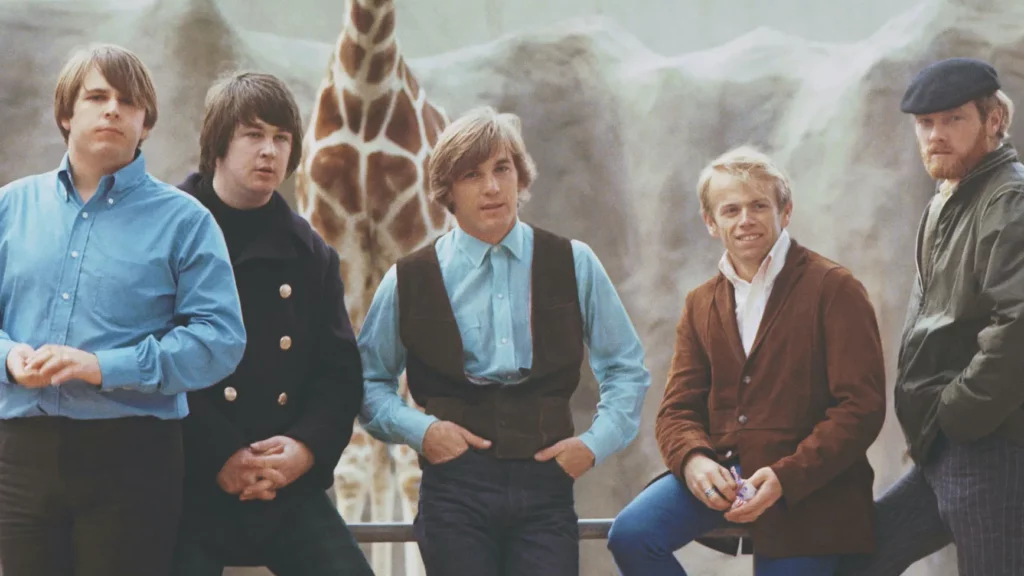
Music nerds love ranked lists. Music nerds love thoughtful commentary. Music nerds love carefully curated playlists. Catalog Crawl provides all of these things and more. In these features, Strange Currencies takes an exhaustive look at the discographies of our favorite artists — the ones who reside at the core of our music obsession.
In honor of the impending premiere of our latest venture, Talkin’ Down the Highway: A Beach Boys Podcast, we’re doing something that we, surprisingly, haven’t already done: ranking the entire Beach Boys catalog. As any of our long-time followers are aware, we’re particularly fascinated by this group; and while the new podcast will explore the myriad avenues of that fascination, at the end of the day, The Beach Boys were actually pretty remarkable album artists (even beyond the widely-acknowledged peaks of their discography). This article is our attempt to take a holistic look at their significant body of officially-released studio records.
Anybody intimately familiar with The Beach Boys’ catalog knows that what lies ahead in these thirty entries is the widest range of quality — from the putrid to the truly sublime — of any major recording artist. Ever. Really, you’d be hard-pressed to find a better album than the one that tops this list, and equally stymied in trying to find a worse one than the clunker at the bottom of it. And that dichotomy is ultimately one of the most eternally-fascinating things about The Beach Boys. Of course, it’s all surrounded by an inner-band (or is it interstescene?) dynamic that the word ‘dysfunctional’ doesn’t even begin to cover.
But that’s all fodder for what promises to be an intriguing adventure in podcasting. What we’re here to focus on in this piece are the albums themselves. All thirty of them. As is customary with these Catalog Crawl features, we’ll be ranking the band’s discography from worst-to-best, offering thoughts on each release, and picking a representative track for a playlist. For the latter task, Remy and I decided to approach it in a somewhat nebulously-defined manner. Essentially, we opted to pick songs that the average Beach Boys newcomer was unlikely to have ever encountered via radio, commercials, soundtracks, or entry-level compilations. You can find the complete Spotify playlist at the bottom of the page.
These projects always represent a significant commitment in time. However, trekking through the entirety of The Beach Boys’ catalog presents its own unique challenge. Making it all the way from beginning to end is something of a testament to endurance; and to do so is to witness both the best and worst of what humanity is capable of within the realm of recorded music. Simply put, we sacrificed to bring this piece to you, so you better enjoy it. — MR
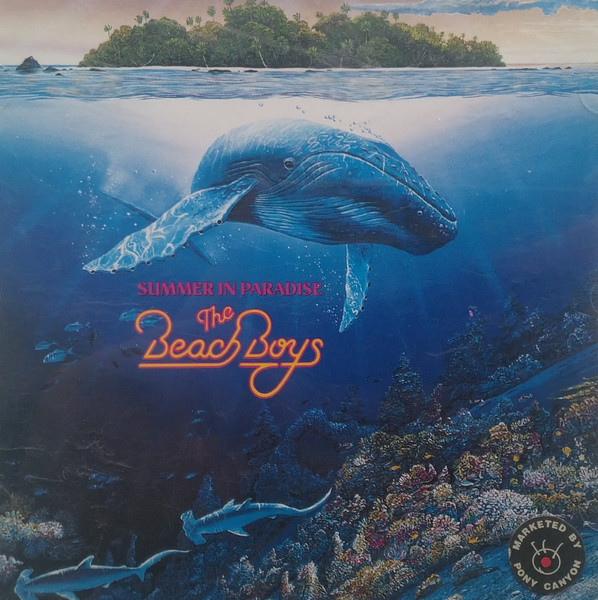
Summer in Paradise
1992
(1.0)
30
What else could be said about Summer in Paradise that we wouldn’t also say about the other bad Beach Boys records? Well, somehow this is even worse. A lot worse. There are literally zero redeeming qualities to this absolutely miserable album. Oh, and just to add insult to injury, this is the longest Beach Boys LP, because of course it is.
Production is one thing — and it’s a glaring problem here — but these songs began bad. Well, not all of them. Mike Love and company butcher Sly & The Family Stone. They butcher The Shangri-Las. What they do to their own dearly departed Dennis Wilson is even worse. And the original “Surfin'” was nothing particularly special, but it’s a damned masterpiece compared to the electro-nightmare presented here. As for the remaining eight songs: they’re objectively terrible. And if you don’t believe that such a declarative statement can be made about art, I offer two arguments: first, listen to “Summer of Love”; and second, this is not art.
One for the playlist: Even if this album wasn’t mercifully absent from Spotify, we couldn’t justify including a song from it on a playlist designed to appeal to Beach Boy skeptics. Again, there is nothing redeeming to be found here. — MR
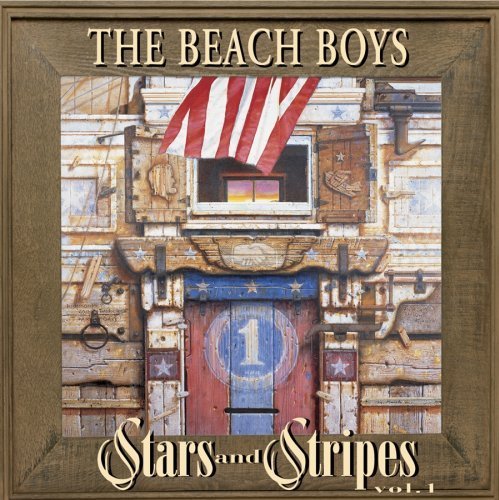
Stars and Stripes, Vol. 1
1996
(2.0)
29
You know what, I’ll hand it to them: I kind of like the idea of an older band recording a cover album of classics, including current day artists that they like. Stars and Stripes, Vol. 1 is not that, at all. I can’t imagine being a Beach Boys fan in 1996, hoping against all hope that somehow that new Beach Boys album everyone is talking about might be at least listenable. And then you get home, pop the CD in your living room stereo, and it’s a bunch of country re-recordings of songs that were far, far superior in their original form. But hey, Brian Wilson is involved in producing it, so the arrangements and vocal harmonies must be pretty good, right? Nope. In some ways, this is the worst arranged of all thirty Beach Boys albums, and that’s saying a lot. I absolutely despise this record. I don’t think it’s the worst Beach Boys album ever, but it’s the one that makes me the most miserable.
One for the playlist: No song, because fuck this album (and it’s not on streaming services anyway). Go listen to a greatest hits compilation instead. — RG
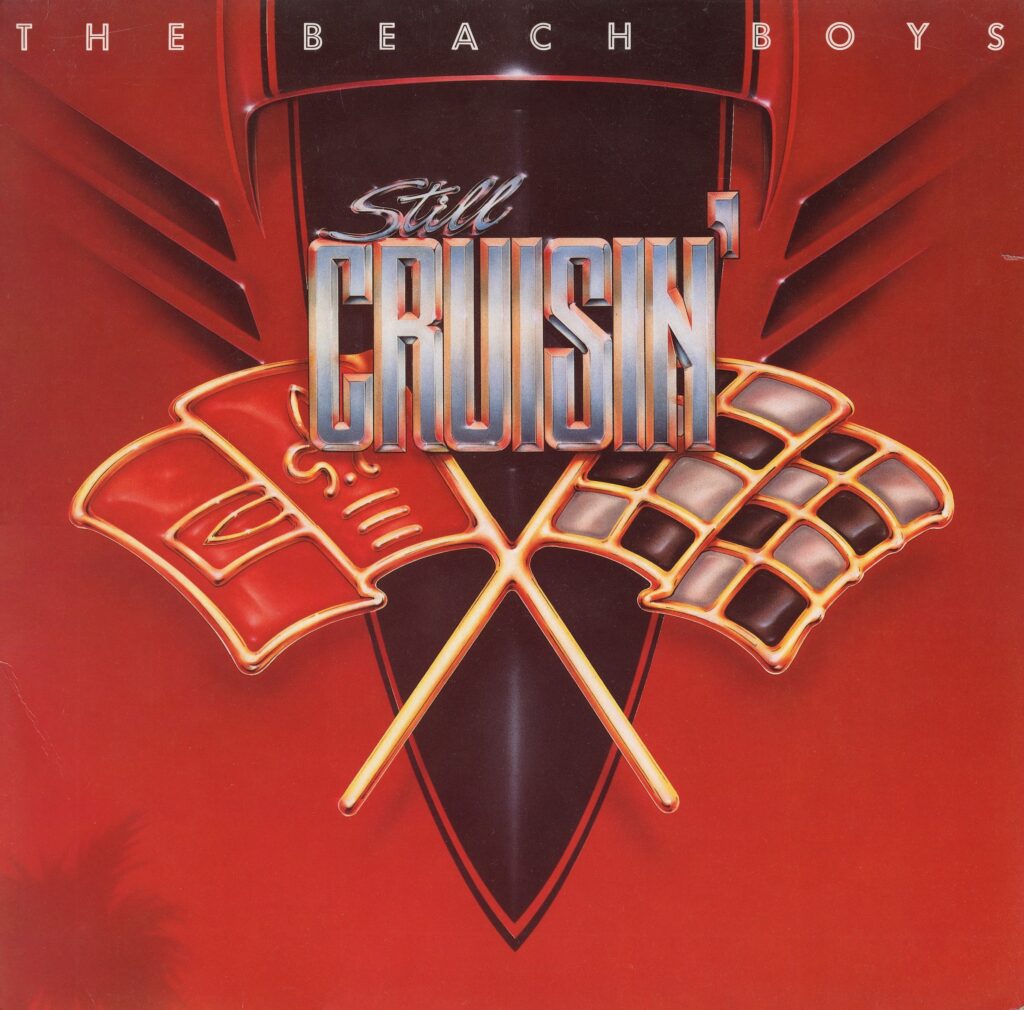
Still Cruisin’
1989
(2.5)
28
First off, understand that the rating has nothing to do with the trio of decades-old songs inexplicably tacked on at the end. So now, on to the seven new songs presented here. Fuck ’em. All of ’em. “Somewhere Near Japan” could be passable if its jangly guitar part wasn’t matched with some of the cheesiest hair riffage of the eighties. And yeah, “Kokomo” is dreadful, but Carl Wilson’s work in the second half of the chorus actually elevates it over the dreck that surrounds it. And yeah, dreck is about as charitable as one can be.
One for the playlist: Fortunately, the three worst Beach Boys albums are not presently available on streaming services, which means that we don’t have to pick anything from this shit sandwich. — MR
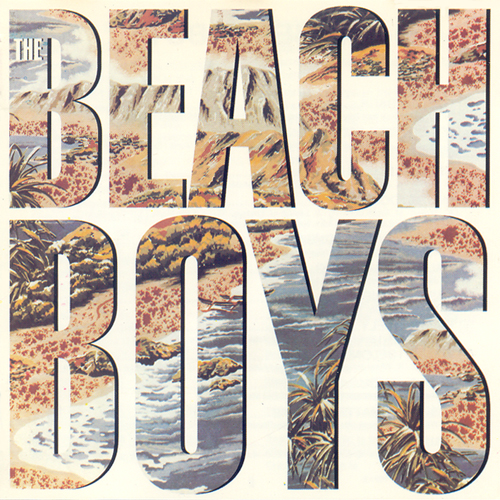
The Beach Boys
1985
(3.8)
27
One of the oft-used criticisms of older music is that it sounds dated. Yes, stuff recorded in the forties, or sixties, or eighties is, more often than not, going to sound like it. In reality, ‘dated’ is often just a convenient shorthand for any given number of issues that plague recordings from a certain era; and no era in the past half-century of recorded music seems to draw the term more than the 1980s. I get it. Some of the production choices of the decade were baffling, and the level of synthetic elements that were being incorporated into music with aplomb made for some perilous territory. The thing is, there was actually some stunning music made with said techniques. Three months after the arrival of this here Beach Boys record, Kate Bush released an all-timer, using some of the very same elements. A year later, another sixties/seventies stalwart, Paul Simon, would release what is arguably his finest work, despite it being awash in “period appropriate” aesthetic choices. These are great records, because, at the end of the day, they were crafted from great source material.
But The Beach Boys is no such record. It’s dismal. Uninspired. Cynical. Shorthand dismissals of ‘dated’ don’t even begin to account for what is wrong with this record. I’d retrace the missteps, but really, aside from the fact that Carl’s voice sounds nice on a few of these tracks — and the bizarre similarity between this album cover and Fugazi’s Repeater — there’s no silver lining to be found here. This is tripe.
One for the playlist: Do we have to? Really? Fine. Even though it was a modest hit, “Getcha Back” is gonna be the pick for this one. It’s gaudy for sure, but the harmonies remind me of the band’s 1964 take on “Hushabye,” and the fact that The Beach Boys were once really, really good. — MR
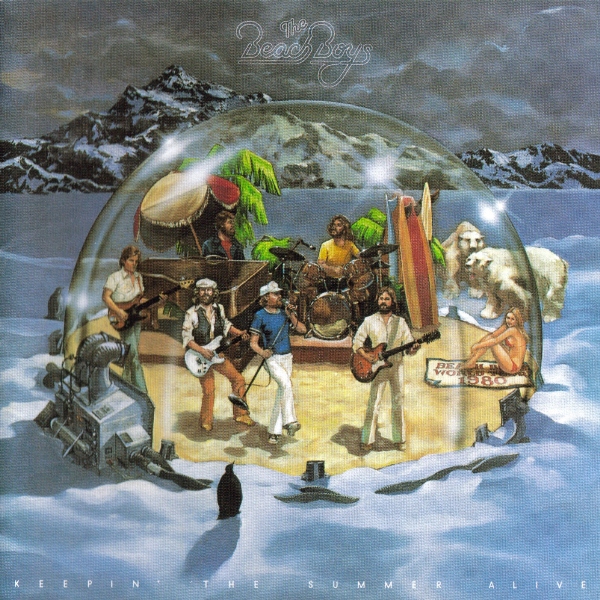
Keepin’ the Summer Alive
1980
(4.2)
26
If this were truly the bottom of the barrel, then The Beach Boys would’ve had no less dignified an ending than say The Kinks. However, in the words of one of the more tolerable songs here, they kept goin’ on. That track kicks off a second side that is far better than the first. Aside from “Sunshine,” the flipside’s other songs could’ve been salvaged with a little bit better guidance, or maybe some input from Dennis — who sits this entire album out, and who would be dead by the time of the band’s next record. If nothing else, check this one out for the bizarre final verse of “Endless Harmony,” which could only be explained by the time that the band accidentally snorted the ashes of a bald eagle through a rolled-up miniature American flag; and keep in mind that this was recorded even before Mike Love tried to rebrand the group as Reagan bootlickers.
One for the playlist: The closest thing to a gem here is Al Jardine’s “Santa Ana Winds.” It’s not fantastic mind you, but the bar is set pretty low, and — barring a couple of production anachronisms — I could hear it fitting in on 1973’s Holland. Unless you’re a completist, or a masochist, listen to that one instead. — MR
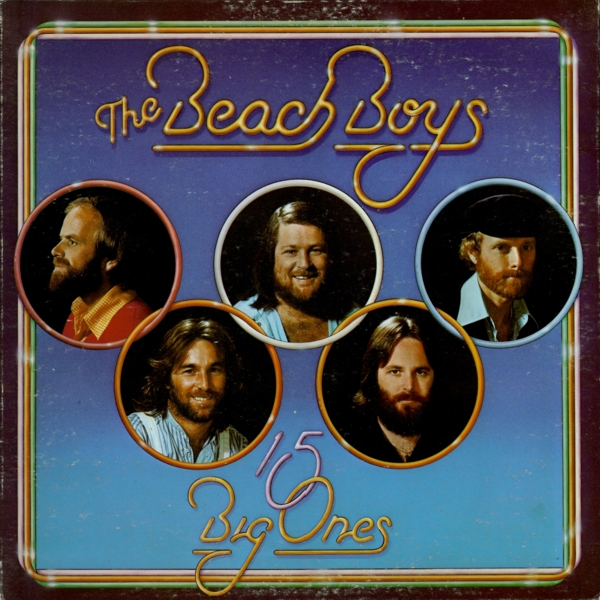
15 Big Ones
1976
(5.0)
25
In all fairness, 15 Big Ones isn’t the utter disaster that a lot of fans have portrayed it as. With that said, it’s still not very good, and much of it is outright bad. A couple of decent-enough originals early in the track listing help to temporarily revive it from the dead-on-arrival opener, “Rock and Roll Music,” but after that, 15 Big Ones — which, by the way, contains exactly zero “big ones” — buckles under the weight of its own pointlessness. There are however some interesting production and arrangement ideas here; ideas that would be put to much better use on the follow-up.
One for the playlist: One of those decent-enough originals, “It’s O.K.” features some nice harmonies, despite its wholly transparent attempt to kick up the nostalgia associated with the band’s halcyon days. — MR
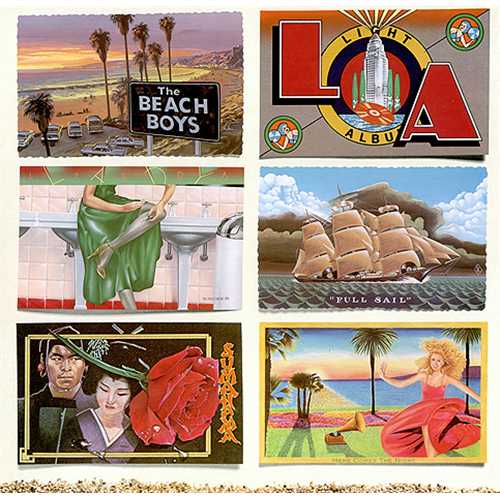
L.A. (Light Album)
1979
(5.2)
24
The Light Album (horrible pun by the way) is one of those bad releases that I really struggle trying to find anything to say about at all. At least an album like Stars and Stripes — which feels like it insults me for being a Beach Boys fan — ignites some sort of visceral disgust from me, and I can use that reaction to find some inspiration to write from. L.A. really makes me feel nothing at all. I mean okay, I kind of ironically like the ten-minute disco version of “Here Comes the Night,” but only because I can almost picture the band having a fun time recording and arranging it. Almost everything else makes me feel like they were falling asleep at the mixing board.
One for the playlist: There’s actually one song on the album where I feel like the sleepy energy lends itself well: the opening “Good Timin’”. While probably written as an anthem towards that kind of lethargic, post-coke high that the boys and many other boomers in late-seventies were used to, I like to see it as a plea for patience, and a reminder that if you wait long enough, good things always know the best time to show up. — RG
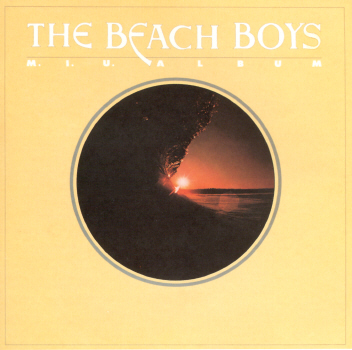
M.I.U. Album
1978
(5.8)
23
I…don’t hate this. I mean, I hate “Hey Little Tomboy,” but at least some of that is because it matches its truly reprehensible lyrics with an instrumental track that deserved better. Other than that, nothing here is outright terrible. In fact, a few of these tracks are pretty good. And I’ll admit that it starts off somewhat promising until the aforementioned abomination derails it all. But it recovers. Never to the point of becoming something truly good, but I’ll be totally honest: M.I.U. is legitimately better than I remembered it to be before revisiting it for this project. Still, it’s a pretty jarring drop from the previous year’s album.
One for the playlist: The affecting “My Diane” is the only legitimately excellent track in this very mixed bag. It’s an easy choice, and one of Dennis Wilson’s best vocal performances. — MR
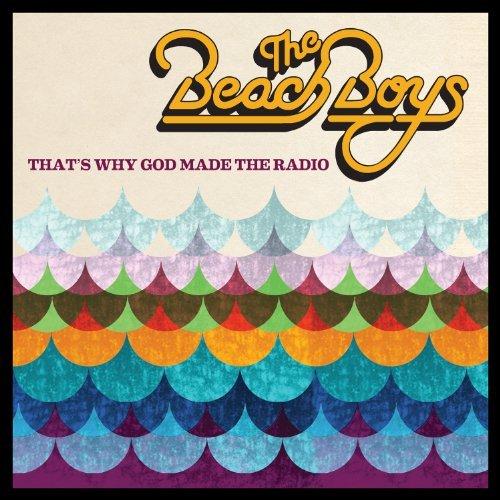
That’s Why God Made the Radio
2012
(5.9)
22
The Beach Boys’ final record is certainly not as bad as it could’ve been, but it’s not great either. While nobody would’ve expected the kind of harmonies that characterized the band’s peak, to hear their voices awash in such obvious autotune makes for an ignominious end to one of the great vocal groups of all-time. Then again, we probably didn’t want to hear the untreated voices of the Beach Elders. So let’s judge this on the songs, shall we? Well, it’s a mixed bag at best. The title-track is snappy, and the two songs that surround it are nice enough. The middle of the record, however, could charitably be described as “lacking.” I’d like to place the blame squarely on Mike Love — and yeah, his songs are predictably awful — but Brian’s contributions here aren’t that much better.
One for the playlist: Things do turn around at the end, with stabilization provided in the form of “From There to Back Again” and “Pacific Coast Highway,” and an actual gem in the closing “Summer’s Gone.“ It’s a bittersweet farewell song for a truly legendary act: affixed to a record that, while clunky, overreaching, and ultra-cheesy, provides as fitting an end as we could’ve possibly expected. — MR
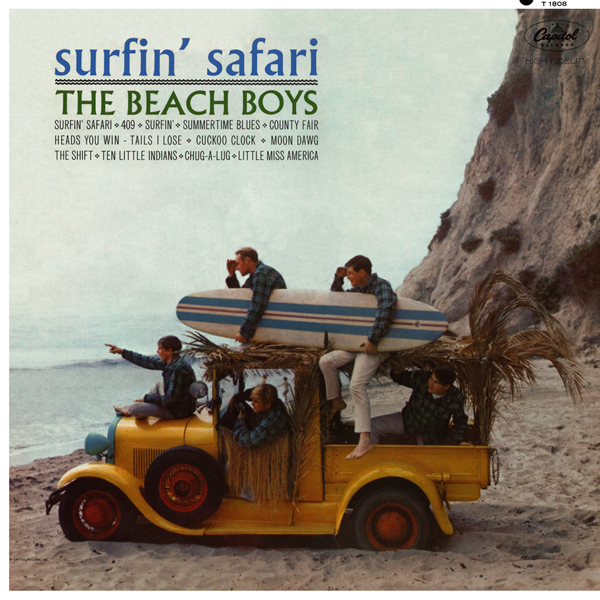
Surfin’ Safari
1962
(6.0)
21
It’s a rare occurrence that a debut album — especially one from the early 60s — so perfectly lays the foundation for most of a band’s following discography as perfectly as Surfin’ Safari. Sound wise, there are definitely moments — particularly the title track, in which The Beach Boys we know and love shine through — but most of the arrangements and performances still leave a lot of room to grow. Yet, it’s those moments in which the brilliance shines through that feels so uniquely Beach Boys. There’s a feeling I associated mostly with later Beach Boys works that I noticed in some of these early albums when working on this project: that being that I actually kind of forget that I’m listening to The Beach Boys until a certain moment, a certain chord or harmony hits that just screams “Brian Wilson.” Safari absolutely has those moments.
One for the playlist: “409” captures a developing Brian Wilson in about as much of a stripped-back look as we’ll ever get. It’s a simple arrangement: guitars, bass, and drums; with car sounds bringing us in; and of course a Mike Love leading track with plenty of harmonized background vocals. Mike’s vocal gives way to a guitar solo, while the boys continue their backing vocals from the verses. It’s an early flash of a technique that Brian would master in the following LPs, where he ties the backing vocals to the instrumental track instead of the lead vocal line, thereby elevating harmony as the key driving force of his arrangements. — RG
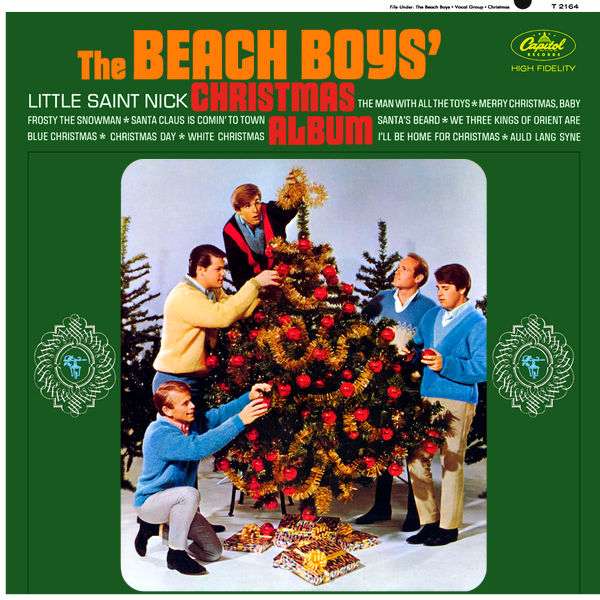
The Beach Boys’ Christmas Album
1964
(6.2)
20
Brian Wilson has commented that Christmas gave him an opportunity to focus on arrangements, and — given the significant improvement that would be displayed over the course of the group’s next few records — one can clearly see its value in that regard. Still, it’s a mid-sixties Christmas album by a pop group, and when compared to something like A Christmas Gift for You from Phil Spector, it’s a bit lacking. While there are some nice vocal and instrumental arrangements throughout, the only real addition to the holiday canon here is the excellent “Little Saint Nick.” On the other end of the spectrum, I feel obliged to call out Mike Love’s atrocious vocals in “Santa Claus is Comin’ to Town.” They at least momentarily distract from Brian’s circus nightmare instrumental arrangement.
One for the playlist: It seems a bit disorienting to place a Christmas song on a playlist intended for any season. If we had picked one, it would’ve been hard not making it “Little Saint Nick,” though the vocals on “We Three Kings” are pretty nice too. — MR
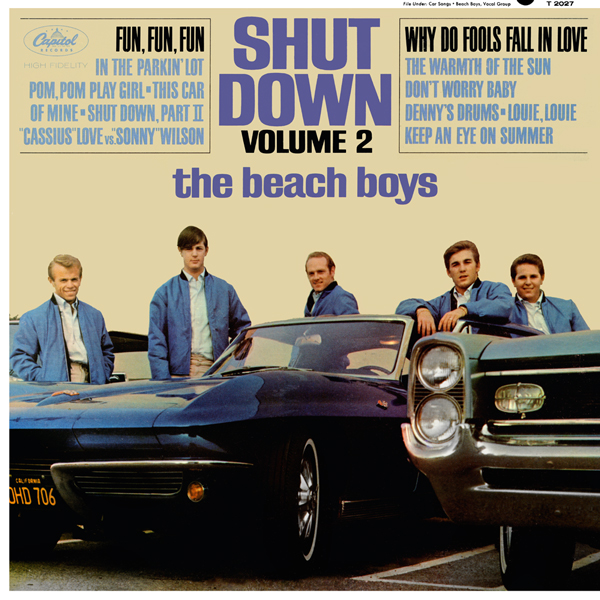
Shut Down Volume 2
1964
(6.5)
19
In a classic example of “progression isn’t necessarily linear,” we arrive at Shut Down Volume 2. While this wasn’t the worst Beach Boys record to date, Shut Down was certainly the most all over the place. The bad here is really pretty bad: namely the skit, a rote instrumental, an absolutely anemic cover of “Louie Louie,” and a thoroughly unimpressive drum solo. Add in another few tracks that are outright forgettable, and you have a significant majority of the album.
But you also have the cracking single “Fun, Fun, Fun,” the gorgeous “The Warmth of the Sun,” and what may be the group’s finest track to date in “Don’t Worry Baby.” And who knows? Maybe three great tracks were enough to satiate the fans who only needed to wait a mere four months between Beach Boys albums. It’s just, that guy in charge of the band already seems ready to move on to something bigger.
One for the playlist: Even though they named a compilation after it, “The Warmth of the Sun” isn’t exactly a track that has worked its way into the popular consciousness. Perhaps it should though, as it’s only a notch below similarly great early ballads, such as “In My Room.” — MR
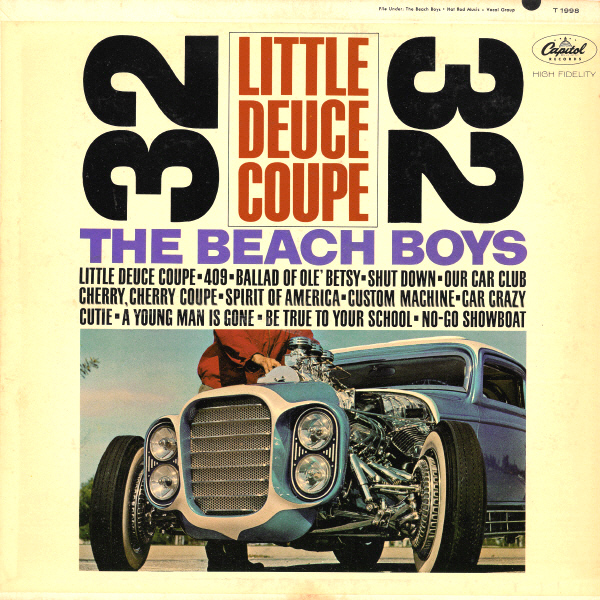
Little Deuce Coupe
1963
(6.6)
18
It is kind of weird to think that Little Deuce Coupe is the first attempt at a Beach Boys “concept album” (heavy emphasis on the quotes). But for 1963 standards, it gets a lot of charm points for the attempt, even if the outcome leaves quite a bit to be desired. Its title track, while being pretty solid, comes from the previous (and superior) release, while two other notable songs (“409” and “Shut Down”) come from even earlier albums. Plus, one of the album’s most notable originals, “Be True To Your School,” has a far superior single version. But hey, I’ll give them points for trying something even a little bit new, and what’s here really isn’t that bad, all things considered.
One for the playlist: “Cherry, Cherry Coupe” is yet another highlight in the development of the group’s vocal arrangements. I particularly like the intertwining “Go cherry, cherry, coupe” and “My cherry coupe beats ‘em up coming off the line/She really sparks when she starts to whine” vocal melodies in the chorus. — RG
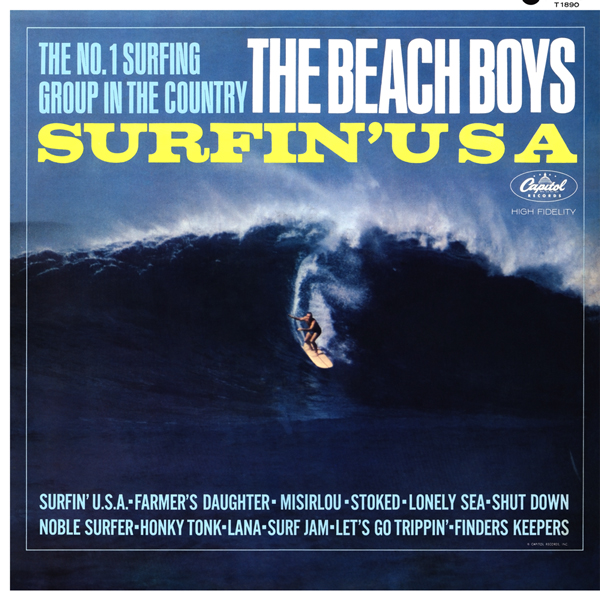
Surfin’ U.S.A.
1963
(6.6)
17
The word that comes to mind when listening to The Beach Boys’ second LP is confidence — at least when compared to their then-still-recent debut. Surfin’ U.S.A. opens with its hit title track, and it’s here that one can best see the growth over the few months that separated the band’s first two records. It might not be high art — and yes, this band would make high art — but it’s fantastic pop music.
Elsewhere, Surfin’ U.S.A. is a bit of a mixed bag, leaning heavily on the instrumentals that account for five of the album’s dozen tracks. However, the aforementioned confidence comes through on some of these tracks. In fact, their take on “Misirlou” is actually pretty passable, even if it’s only a shadow of the Dick Dale version that they’re paying homage to.
One for the playlist: The first excellent Brian Wilson ballad to make it onto a Beach Boys record, “Lonely Sea” is a lovely composition that highlighted Brian’s best vocal performance to date. — MR
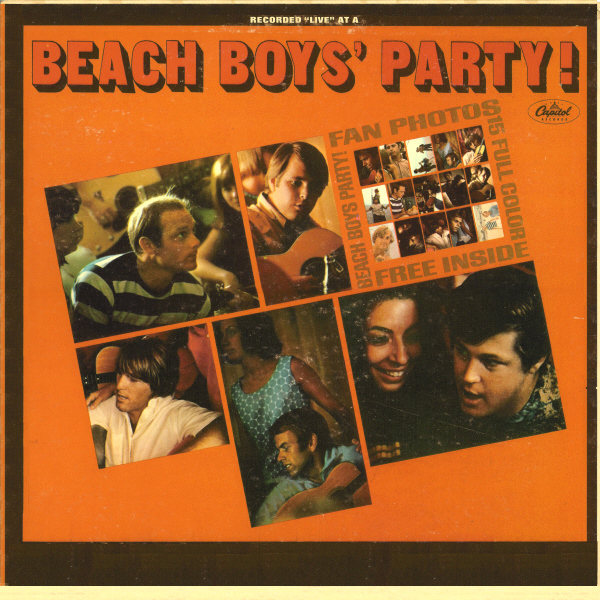
Beach Boys’ Party!
1965
(6.9)
16
The Beach Boys released three albums per year from 1963-65, and in each trip around the sun, one of those records could easily be viewed as the result of Capitol Records’ demand for product. In 1963, it was the car-themed Little Deuce Coupe, which repurposed several old recordings to pad out the playlist. In 1964, it was a Christmas album. In 1965, the boys emerged with a novel concept: an album that appeared to be recorded spontaneously at a band hangout. While it’s lightweight, and comes off as a jarring detour in the middle of a run that found Brian truly coming into his own as an album artist, Beach Boys’ Party is actually a pretty enjoyable listen. The band never take themselves too seriously here — which works both for and against it — but Party proves to be an interesting and unique showcase for their talents.
One for the playlist: Amid the pointless parts — and a few that manage to reach all the way to grating — there’s one moment that completely justifies the existence of Beach Boys’ Party. It comes in the cover of Phil Spector’s “There’s No Other (Like My Baby),” as Brian is joined by his bandmates, and those perfect Wilsonian harmonies elevate this lark of an album into something momentarily transcendent. — MR
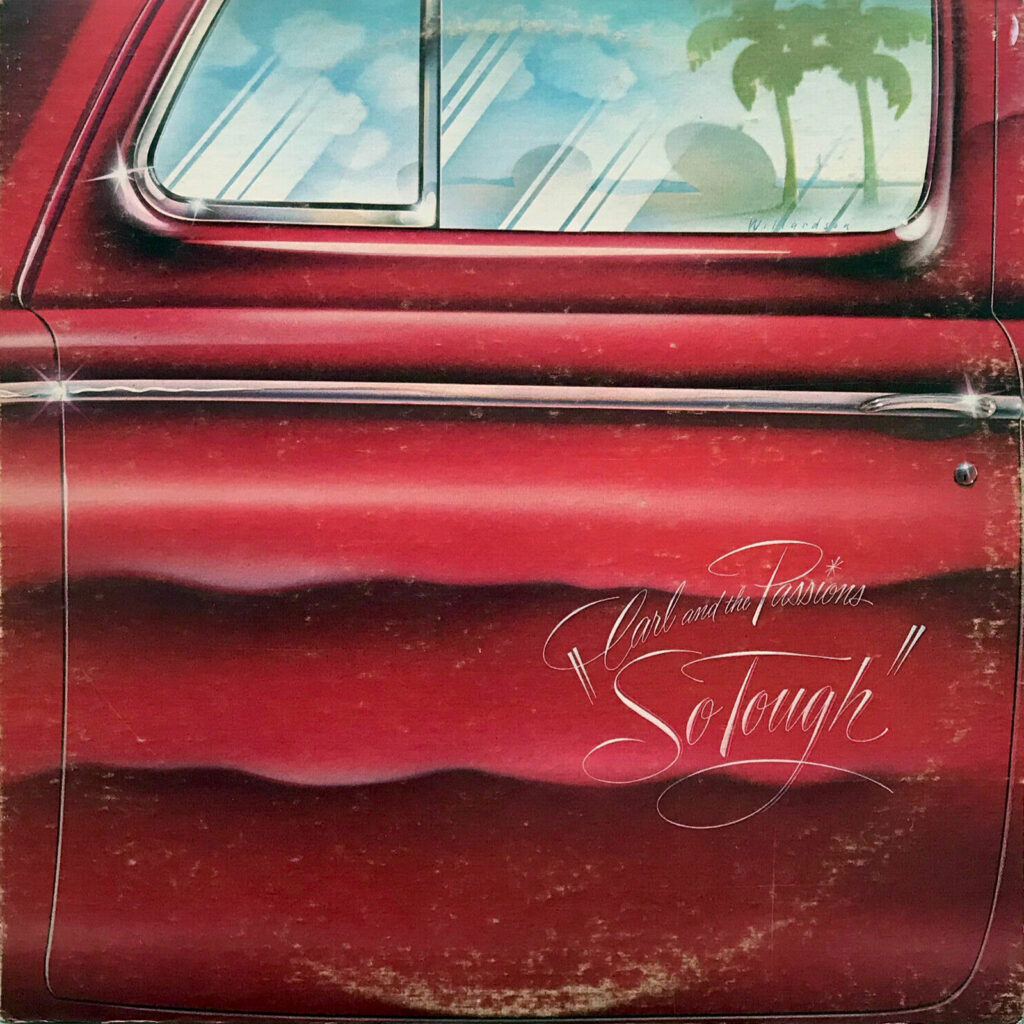
Carl and the Passions “So Tough”
1972
(7.4)
15
The boys call in some ringers — Blondie Chaplin and Ricky Fataar — and deliver a minor-but-solid release with Carl and the Passions. It’s easy to be underwhelmed by this one — especially as it comes between two far superior records — but outside of the turgid gospel dud, “He Come Down,” nothing here is outright bad. Granted, aside from their signature harmonies, little of it sounds all that much like The Beach Boys either. Perhaps that explains the head-scratcher of a title.
One for the playlist: It seems appropriate to highlight a Carl song for this one — and his “All This Is That” is certainly one of the better songs here — but the Blondie Chaplin-led “Here She Comes” is probably the standout track. Again, it doesn’t sound much like The Beach Boys, but it’s interesting to hear them trying on a slightly funkier sound. — MR
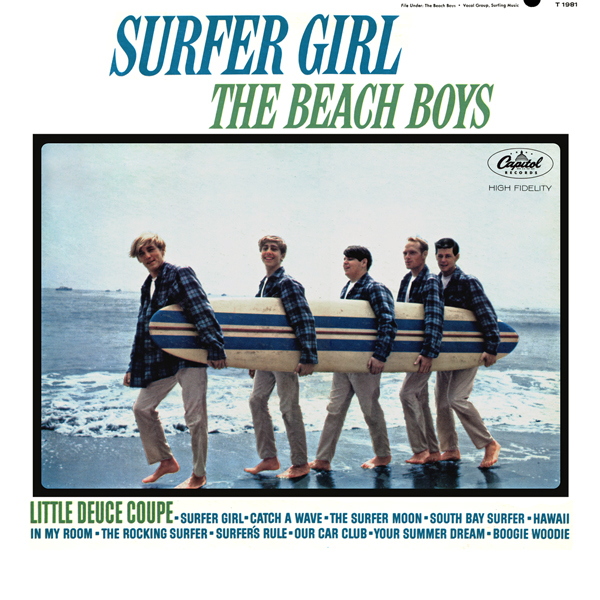
Surfer Girl
1963
(7.6)
14
Even more of a step forward than Surfin’ U.S.A. was from Surfin’ Safari, The Beach Boys’ third LP was easily their best album to date. Improvement can be found all over this one. First, Brian’s production is significantly more sophisticated than on the group’s previous records: evidenced particularly by genuinely inventive arrangements on “Catch a Wave” and “The Surfer Moon.” Then there are the ballads, two of which are straight-up masterpieces, in the title track and “In My Room.” Both display Brian’s incomparable knack for vocal arrangements, and stand toe-to-toe with the best work from the group’s peak era.
One for the playlist: The aforementioned arrangement of “The Surfer Moon” is impressive enough, but when paired with an inventive chord structure and lush vocal harmonies, it makes for a legitimate gem: one that doesn’t get nearly enough mention. — MR
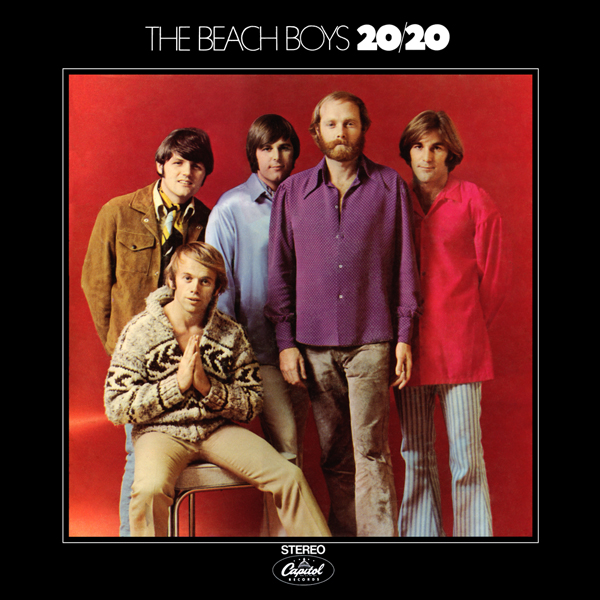
20/20
1969
(8.0)
13
Have you ever felt like something was just off while listening to an album? Not in a “God this is awful, what were they thinking?” kind of way, but in a “I feel like I, and my entire family, are now cursed because I listened to this one too many times.” That’s pretty much how 20/20 makes me feel every time I listen to it. Maybe it’s the disjointed, unfinished quality of the songs? Maybe it’s the awkward, Brian-less cover? How about the fact that multiple murderers have songwriting credits? Is it good though? There are some great SMiLE leftovers in “Our Prayer” and “Cabinessence,” and I’ve always had a soft spot for “Do it Again” — even if it is a shameless attempt to capture those sweet nostalgia bucks. But other than those songs and “Time to Get Alone” — which is super super underrated — this album really is a mess, even if it’s almost supernaturally enticing.
One for the playlist: Hey look, it’s one of those aforementioned songs where a murderer has a songwriting credit! The boys once again recorded a pretty solid Spector cover with “I Can Hear Music,” but this time it feels much more like a reimagining of the original song than just a straight-up cover. I particularly like the fade in at the beginning, which makes it feel like the recording just washes over you. — RG
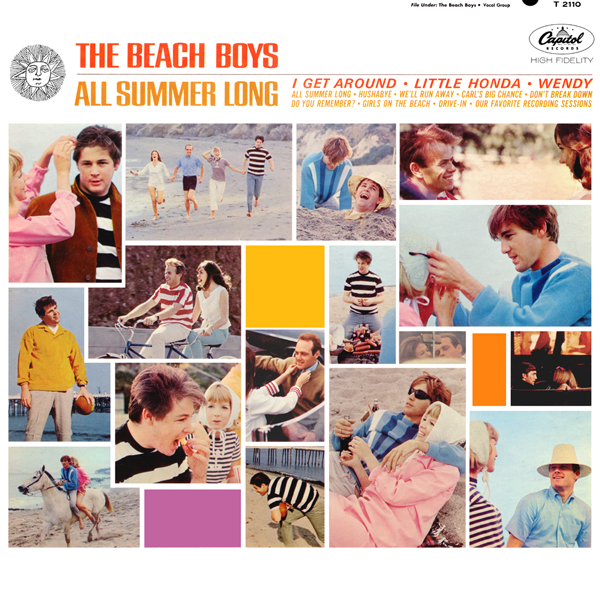
All Summer Long
1964
(8.2)
12
While All Summer Long is (somehow) the sixth album the Beach Boys released, in some ways it truly feels like the first “Beach Boys” album. A few stinkers bring it down, but the best tracks see Brian finding his pop stride, with “All Summer Long,” “I Get Around,” and “Wendy” in a way that the Boys hadn’t been able to capture beforehand. And there’s just enough dynamic difference in songs like “Hushabye” and “Girls On the Beach” to hint towards Brian’s future experimentations with Spector-influenced ballads on albums like Today and Pet Sounds.
One for the playlist: While not quite as stunning as some of the band’s other attempts at a Spector ballad, “We’ll Run Away” is such a wonderful hidden gem, that takes a moment to breathe on an album with quite a bit of forward momentum. — RG
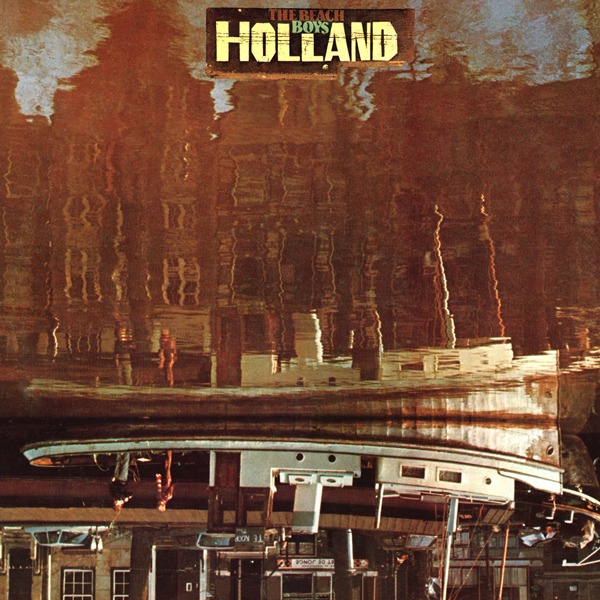
Holland
1973
(8.6)
11
In a catalog full of weirdness, Holland is its own special brand of offbeat. When I first heard the record about fifteen years ago, I was struck at how cohesive and consistent it is — despite its lateness beyond the band’s acknowledged peak. But that relative smooth sailing is still imbued with some strange, strange stuff: you’ve got Dennis writing an ode to Robert Fulton of all people; Carl casually dropping what might be his best song; a surprisingly coherent and enjoyable trilogy about California, with a genuine gem composed by Mike Love, of all people; and Brian’s bizarre pet project in the bonus EP, Mount Vernon and Fairway.
One for the playlist: The aforementioned Carl track, “The Trader” features an excellent lead vocal performance from the youngest Wilson brother, and some fine harmonies: particularly in the gorgeously atmospheric second half. — MR
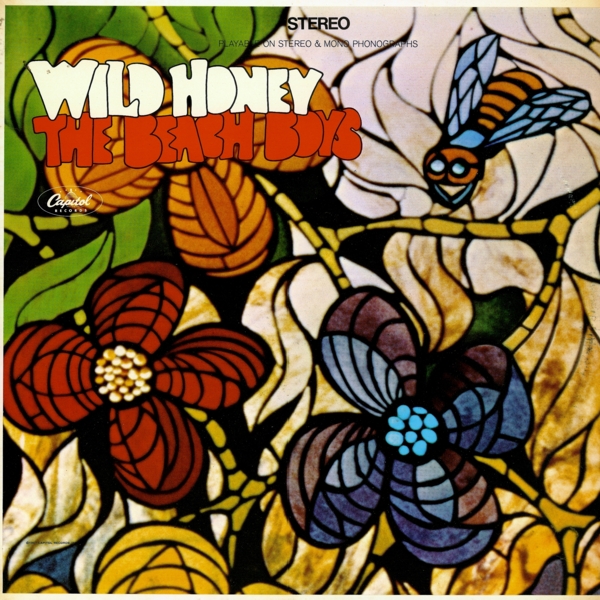
Wild Honey
1967
(8.7)
10
The first truly post-SMiLE Beach Boys album finds the band in disarray, and in search of a new sound and direction to guide them into the turbulent late-sixties. Seemingly a disaster waiting to happen, the breadth of sound in Wild Honey is actually the album’s greatest strength. The title track, the spectacular “Darlin’,” and solid cover of Stevie Wonder’s “I Was Made to Love Her” show the band’s ever-present love of Motown and R&B, while songs like “Aren’t You Glad” and “A Thing or Two” hint toward the more homespun sounds that would be built upon on the follow-up, Friends. This, unsurprisingly, makes it feel like less of a Beach Boys album than you may expect, but considering the disaster surrounding the SMiLE sessions, there’s a point where you realize that maybe a break from being the “typical” Beach Boys is what they needed.
Then “Let the Wind Blow” comes on, and all of a sudden you remember everything that came before this album for one sweet two-and-a-half-minute moment, thinking that maybe this is what the band could have sounded like if SMiLE had actually come out like it was supposed to. But just as soon as you’ve become comforted by the idea, the song fades away abruptly into “How She Boogalooed It.” Oh well…
One for the playlist: It was a tough choice deciding on a pick for Wild Honey, but at the end I chose “Country Air” for just how much it really feels like a middle ground between two distinct eras of the band. Something about mixing that reverb-drenched piano that feels so late-sixties, with a bit of that early-seventies homespun “feelin good” lyricism feels so right. — RG
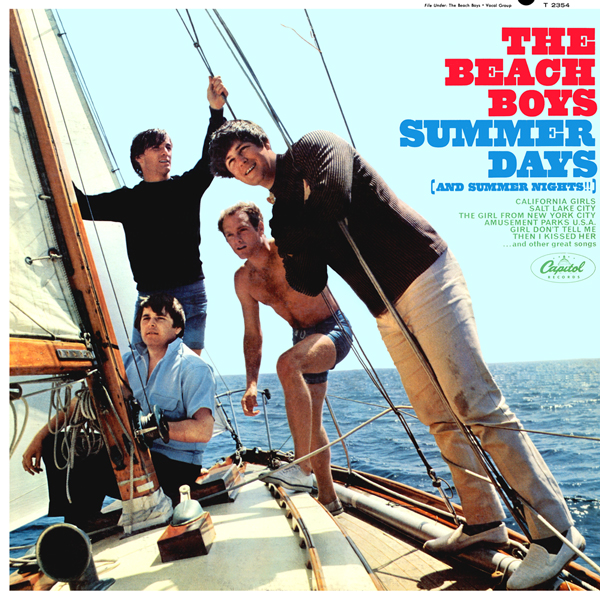
Summer Days (And Summer Nights!!)
1965
(8.8)
9
Maybe more than any other band, The Beach Boys’ discography lacks a frustrating amount of linearity. While their contemporaries seemed to improve or decline at a steady pace from album-to-album, The Beach Boys’ development has always felt a little more sporadic. Following the release of the fantastic Today — which showcased Brian’s ever-growing talent for ballads and arranging — Summer Days feels more like a return to All Summer Long than a concrete step forward. That’s not to say that Summer Days isn’t a good, or even great follow-up: the do-over of “Help Me Rhonda” and the hit “California Girls” are two of the best songs in the band’s discography; not to mention some criminally-overlooked tracks like “Let Him Run Wild,” “You’re So Good To Me,” and the admittedly goofy “The Girl From New York City.” All show a brilliant band and songwriter just entering their golden age. It’s just a shame that Summer Days had to come right after and before two discography-defining masterpieces.
One for the playlist: While most of the songs on Summer Days feel like they shy away from the intimate lyrics present on Today, Carl’s “Girl Don’t Tell Me” feels right in line with other ballads from this period in the band’s discography, even if it did slightly rip off “Ticket to Ride.” — RG
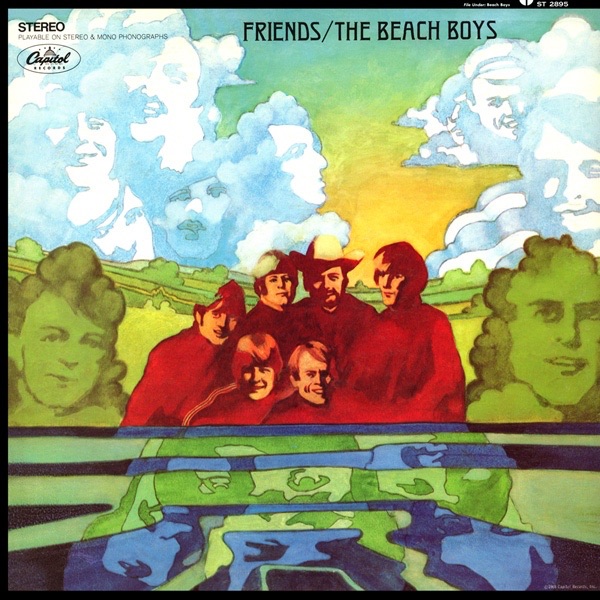
Friends
1968
(8.9)
8
The post-SMiLE “trilogy” ends with the coziest record in The Beach Boys’ catalog. In fact, Friends is simply one of the coziest records by anybody. But cozy doesn’t mean disengaged, as Brian was very much at the helm of this charming little album. All of the frequent descriptors of Friends — soft, pastoral, meditative, peaceful, lush, soothing, psychedelic — are apt, and making something this evocative doesn’t happen by accident. It may not have the major statements of Pet Sounds, but in terms of genuine warmth and emotion, this is the closest thing to it in the band’s discography.
One for the playlist: There are a lot of great ones to choose from here, but it’s a good idea to include another Dennis song, and “Little Bird” is one of his best. Among his earliest songwriting contributions, it glides along with a genuine groove, and is elevated by the group harmonies, and an instrumental arrangement that Brian likely played a big role in. Gotta love that cello, especially. — MR
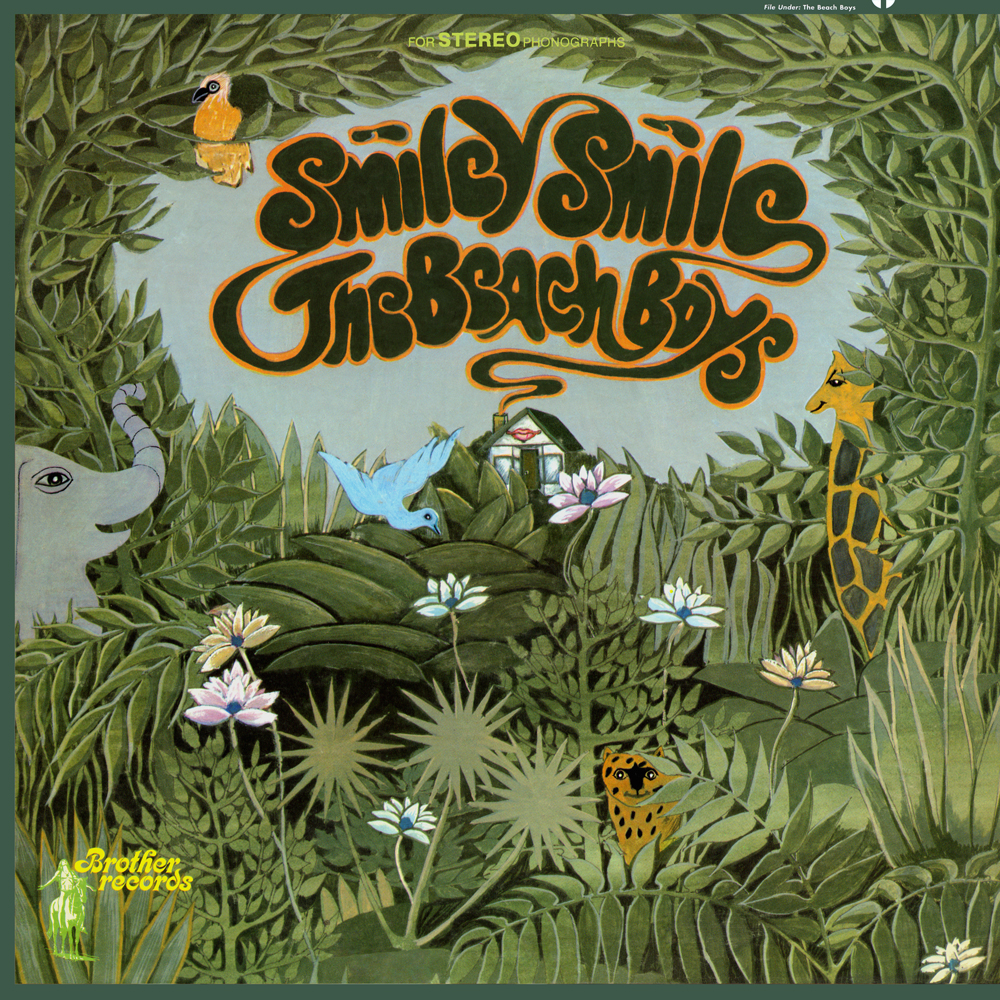
Smiley Smile
1967
(8.9)
7
For too long, Smiley Smile has stood in the frustrating shadow of the album that could have been — and I’m as guilty as anyone of viewing it that way. Nowadays though, I’m inclined to think of it as the first entry in a fascinating trilogy that really confirms the whole “Beach Boys as the fathers of oddball pop” thing. Any argument that SMiLE wasn’t released because it was “too weird” should be squashed by the very existence of this record. Sure, while it’s grounded by two of the finest pop singles of the late-sixties, both are as unconventional as anything that would’ve made it on the radio at the time. But even these have nothing on the true oddities: tracks like “Little Pad,” “Vegetables,” and “She’s Goin’ Bald.” They’re not for everybody — and they’re certainly not what anyone was expecting or wanting from The Beach Boys in 1967 — but they’re great. Really.
One for the playlist: Though there are those two major tracks, and several choice SMiLE leftovers, it feels most appropriate to have Smiley Smile represented by one of those aforementioned oddities. We’ll go with the charmingly tossed-off “Little Pad” to reflect the off-kilter appeal of this special little record. — MR
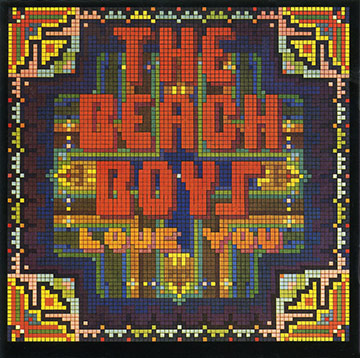
Love You
1977
(9.3)
6
There’s obviously a ton of important backstory to Love You, and while I sometimes worry that focusing too much on context can falsely inflate the perception of any work of art, in this case, context and art are utterly inseparable. That’s not to say that one couldn’t enjoy Love You without understanding where Brian Wilson was at in 1976-77, but let’s face it, some of these songs just wouldn’t fly had they been written by virtually any other artist. And while those idiosyncrasies are particularly abundant in the lyrics — and mind you, these are almost entirely Brian’s lyrics — they’re also pulsing through every second of the music as well. Sure, we can focus on the content about Johnny Carson and the solar system, but good God, the stuff going on underneath it all is bizarre.
But it’s bizarrely fascinating in a way that The Beach Boys hadn’t been since the SMiLE project. Keep in mind, that everything between Wild Honey and Holland was the work of a reasonably democratic unit. This however, is a Brian Wilson record, with The Beach Boys adding only their literal voices. And nowhere in that previous decade had anybody really pulled back the curtain on the genius behind The Beach Boys. Sure, he’d peek out here and there, lend his talents to elevating something like the transcendent “All I Wanna Do,” or casually drop a masterpiece like “Til I Die,” but “Brian Wilson: Creative Director of The Beach Boys” was largely off the job.
But now, Brian was back, and not just as part of some bullshit campaign to market a nostalgia-based tour/album. However, this Brian was different: scarred by drug abuse and a poorly-treated mental health crisis, and under the authoritarian control of an egomaniacal Svengali. Brian was physically there, but mentally adrift, and spiritually communicating only via song. And what he communicated was revealing, heartbreaking, and beautiful.
One for the playlist: Quirkiness abounds across Love You, and it makes for a considerable amount of the album’s offbeat charm. However, the almost-arresting directness of “The Night Was So Young” was Brian’s most affecting composition and recording in years. — MR
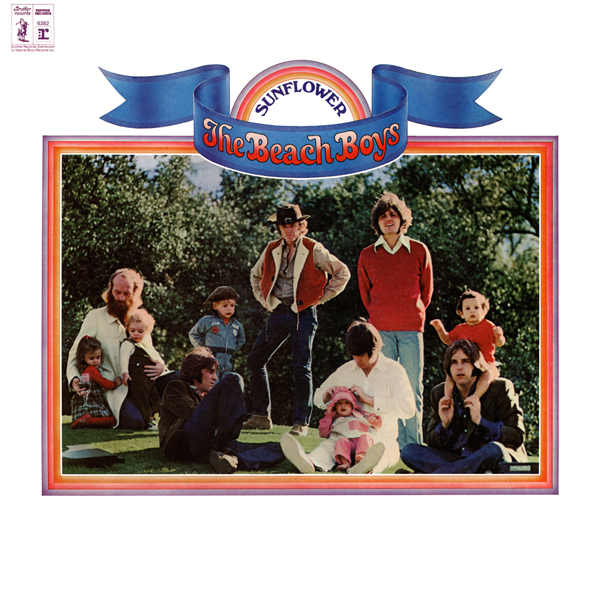
Sunflower
1970
(9.3)
5
I’ve known this record for nearly twenty years, and I’m dumbfounded as to how it continues to improve the more I hear it. Sunflower is often regarded as The Beach Boys’ most democratic record, in that it’s the one that features the most meaningful contributions from the entire group. Fair enough. Everybody is in fine form here, including the generally-intolerable Mike Love. Outside of the Dennis dud “Got to Know the Woman” — he does redeem himself with three other excellent tracks — Sunflower is a front-to-back gem. Just accept that you’re gonna have to wade through some lyrical cheesiness — which is almost always the case with the boys — and this one reveals itself as a classic.
One for the playlist: It’s become perhaps the hip Beach Boys song — and we’ve already featured it as part of our own A Century of Song project — but there’s never a good reason not to include “All I Wanna Do.” It’s an absolutely sublime two-and-a-half minutes of pop music, in that it’s the polar opposite of Sublime. It’s gorgeous, nuanced, vibe-y as hell, and a true progenitor of dream pop. — MR
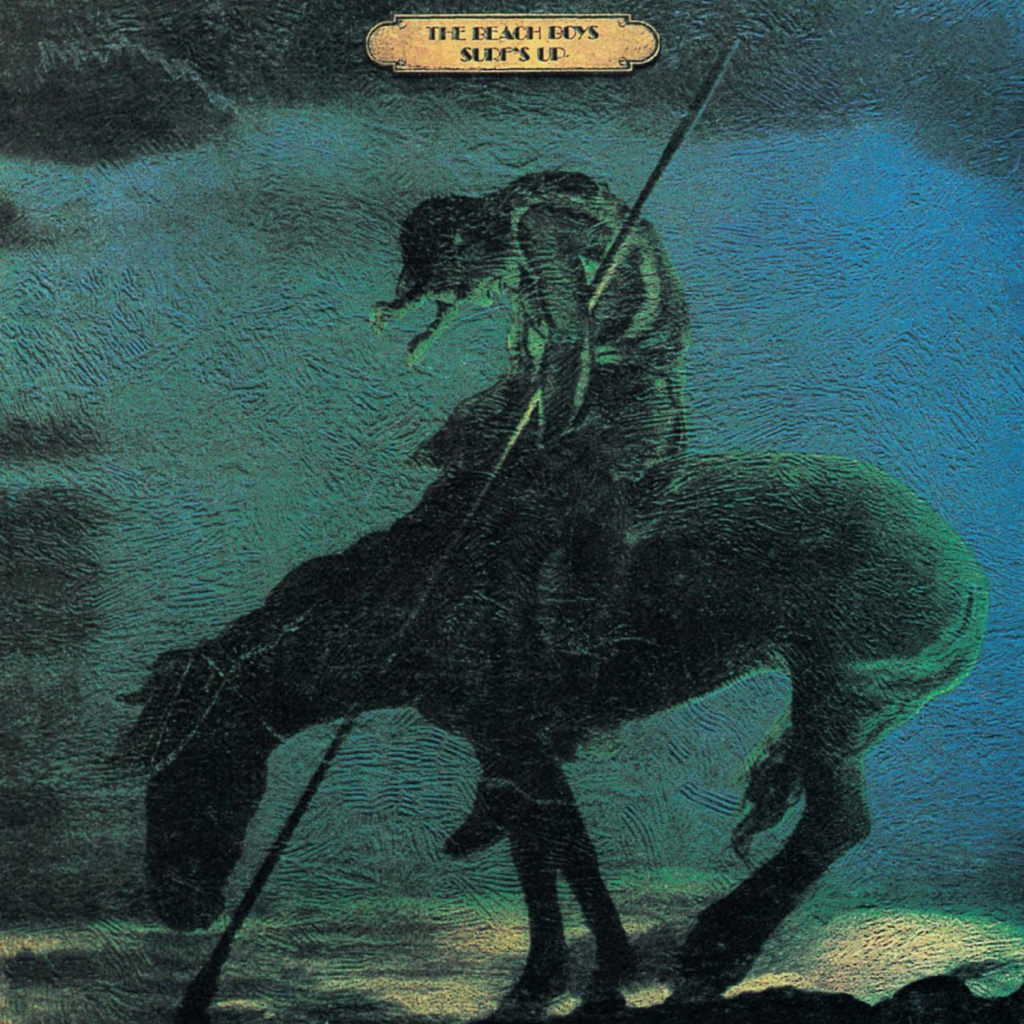
Surf’s Up
1971
(9.4)
4
Surf’s Up is just one of those albums which proves that (some of) the non-Brian Beach Boys really started to blossom into great songwriters of their own with each consecutive release. Some of that lovable early-seventies weirdness comes from songs like “Don’t Go Near the Water,” and the little bit more serious “Long Promised Road”: which were written by Al Jardine and Carl Wilson respectively. It’s even got the pretty decent Bruce Johnston ballad “Disney Girls (1957),” even if it does feel like it doesn’t quite capture that Beach Boys ballad feel. But, like most Beach Boys albums, the true star of the album is Brian, and particularly in the final three songs: the weird-yet-wonderful “A Day In the Life of a Tree” is incredibly endearing, and reminds me a lot of his work on Love You; “Till I Die” is the best non-SMiLE song released post-Pet Sounds, and features Brian’s best output as a solo lyricist; and the title track, even if it’s not the superior SMiLE recording, is still “Surf’s Up,” and stands with any song the group released before — and especially after — it.
One for the playlist: As much as I love the Brian songs on Surf’s Up, I think the unsung hero of this entire era is Carl. If it weren’t for his leadership, there’s a very good chance the band could have fallen apart. “Feel Flows” — a song in which he shares writing credit with band manager Jack Rieley — is proof that his songwriting and arranging abilities weren’t far behind his band-leading abilities. I love the gradual build-up throughout the entire song that feels so unique to Carl’s style, while still fitting in so well with the late-psychedelic Beach Boys sound that they would seem to lose in the following albums. — RG
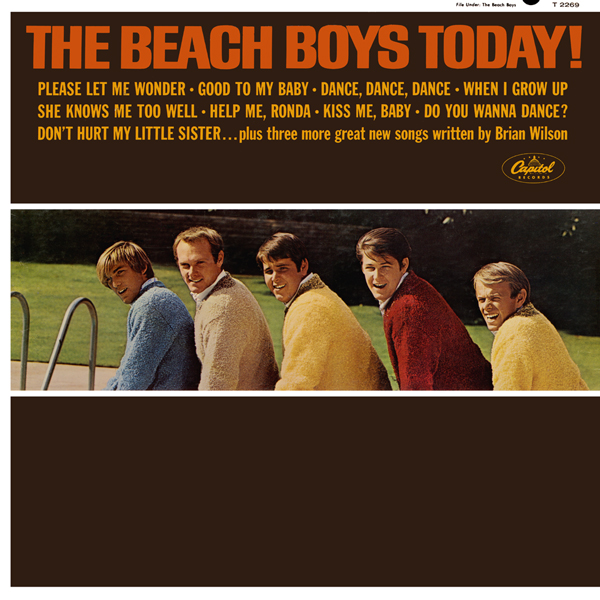
The Beach Boys Today!
1965
(9.5)
3
One small step for Brian Wilson, one giant leap for pop music. Today marks the arrival of The Beach Boys’ frustratingly-brief peak — even if the next two LPs that the band released were a step backwards. Side A is splendid: upbeat tracks with the kind of harmonies that one would’ve come to expect at this point, but with far more lush arrangements than anything in the group’s catalog to date. But it’s the flip side that is particularly extraordinary: five near-perfect ballads, each of which makes the path to Pet Sounds abundantly clear. Massively underrated, this one is not to be missed.
One for the playlist: It’s gotta be something from that stunning second side, but which one? Though a case can be made for any of those ballads, I’ve always held a particular affinity for “She Knows Me Too Well” — which features one of Brian’s finest vocal performances. — MR
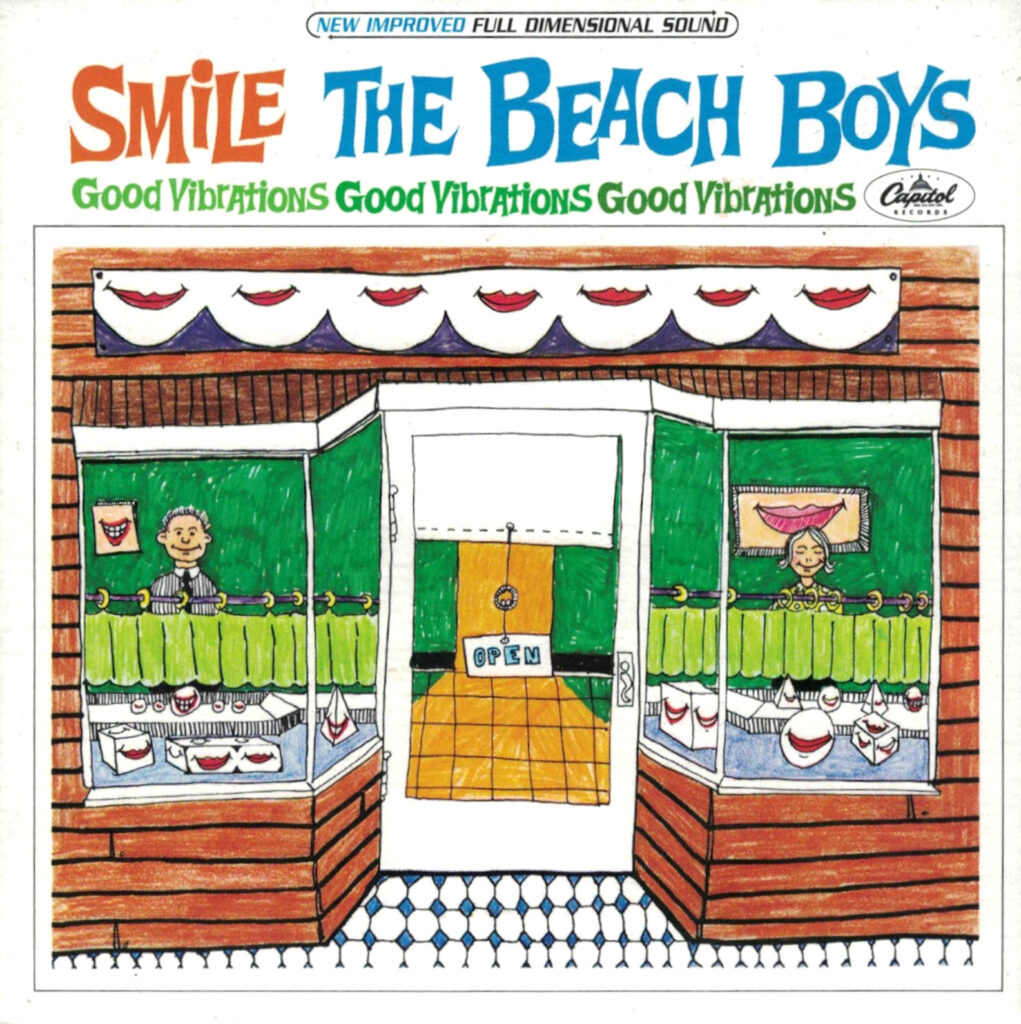
The Smile Sessions
2011
(10.0)
2
I’ll be honest: I really tried my hardest to focus this write-up squarely on the material released when The Smile Sessions came out in 2011. I feel that everything I have ever read about it focuses too much on the story of the album’s downfall, and that by focusing on that aspect, it overshadows discussions about how good these sessions really are. Yet, the more I’ve listened to the album — and the more and I have written and deleted analysis about the segmentation on “Heroes and Villains” and “Cabin Essence,” or the arrangements of “Surf’s Up” and “Wind Chimes” — it all just becomes more clear to me that I do not have the musical vocabulary to describe what those tracks are like. It’s hard to wrap my mind around the fact that The Smile Sessions is somehow “unfinished,” that what we have now isn’t the full vision of a twenty-four-year-old Brian Wilson sitting in that sandbox in his living room. But maybe that’s just it. Maybe the moral of The Smile Sessions is that a project this ambitious and detailed can never really be finished, or understood by those who love it.
One for the playlist: On an album full of grand artistic statements, I’m choosing one of its quieter moments with “Wonderful”: an introspective track highlighting some of the more spiritual aspects of Brian Wilson and Van Dyke Parks’ songwriting partnership. And, as with the rest of the album, it has some of the greatest vocal arrangements anyone has ever put to tape. — RG
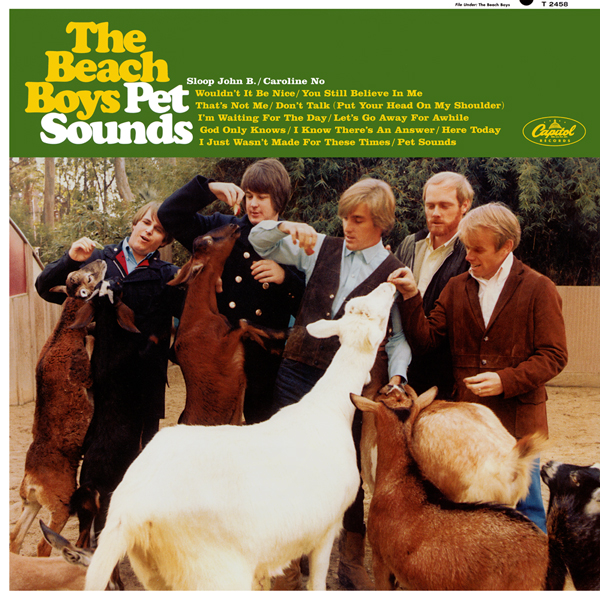
Pet Sounds
1966
(10.0)
1
What else can be said about Pet Sounds that hasn’t already been said? I could probably come up with something useful, but I’m not gonna stick it at the end of an article that long ago surpassed the 6000 word count, so I’ll just keep it brief: this is my favorite piece of art ever created, in any medium. I’m also reasonably sure that it’s the best album ever made, though I suppose that’s a bit tougher to prove.
I played Pet Sounds for both of my kids when their ages were still most-fittingly measured in hours. I treasure the original pressing that my wife found for twenty-five cents at a church rummage sale. I’ve listened to this album in quiet awe for twenty-four years, and was moved to tears when seeing Brian Wilson perform it live in its entirety.
You may not love this album as much as I do, and that’s okay. But I sincerely hope that there is a record that you do love as much as I love this one.
One for the playlist: Well, I suppose it could be anything outside of the iconic “big four” of “Wouldn’t It Be Nice,” “God Only Knows,” “Sloop John B,” or “Caroline No.” Everything on this record is stunning. Perfect even. But for the past couple of years, I’ve really been feeling “That’s Not Me” more than ever before. It might seem minor when compared the the aforementioned tracks, but both inside and outside of the context of Pet Sounds, it’s just a remarkable recording that doesn’t seem to get enough praise. — MR


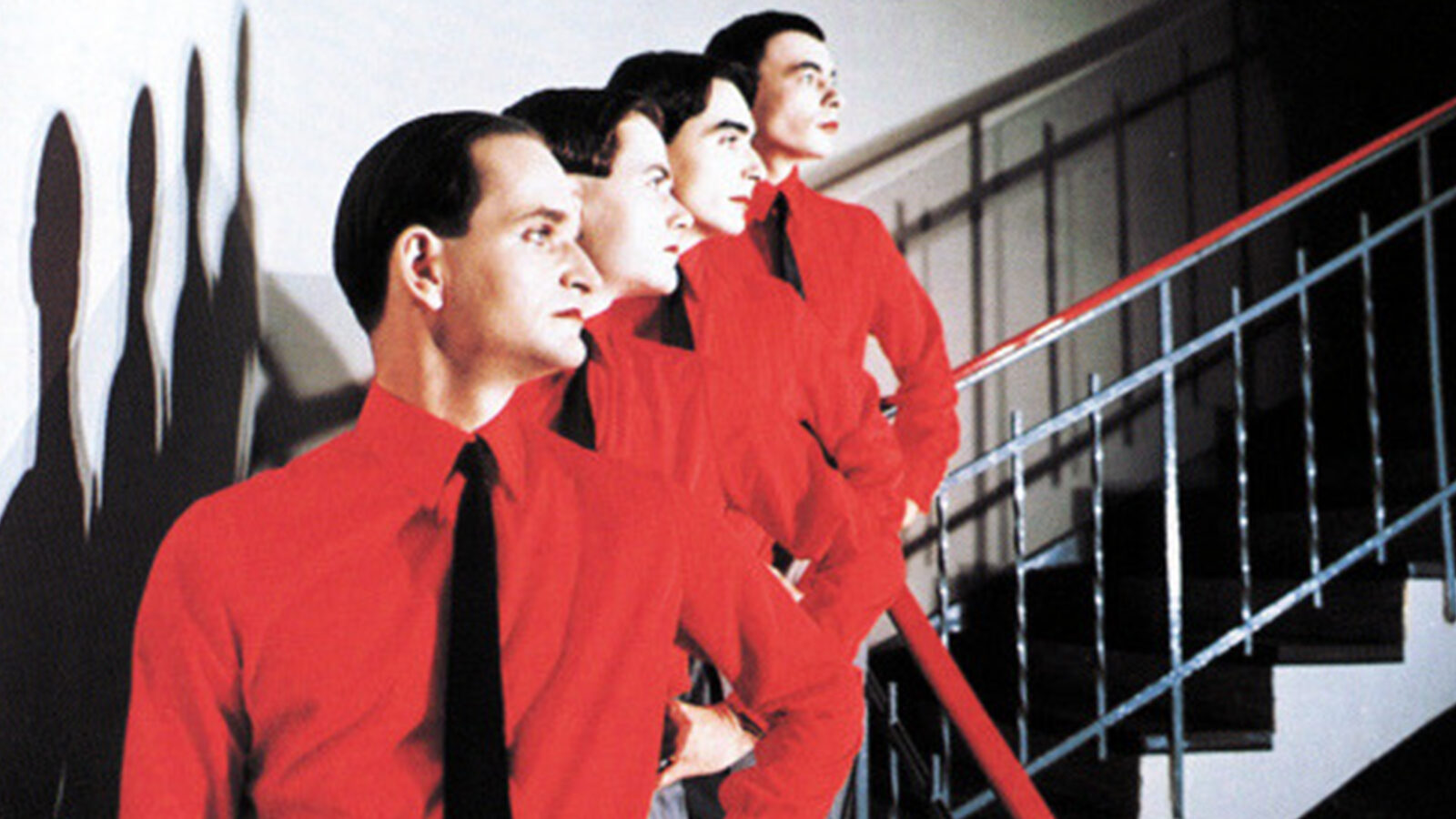
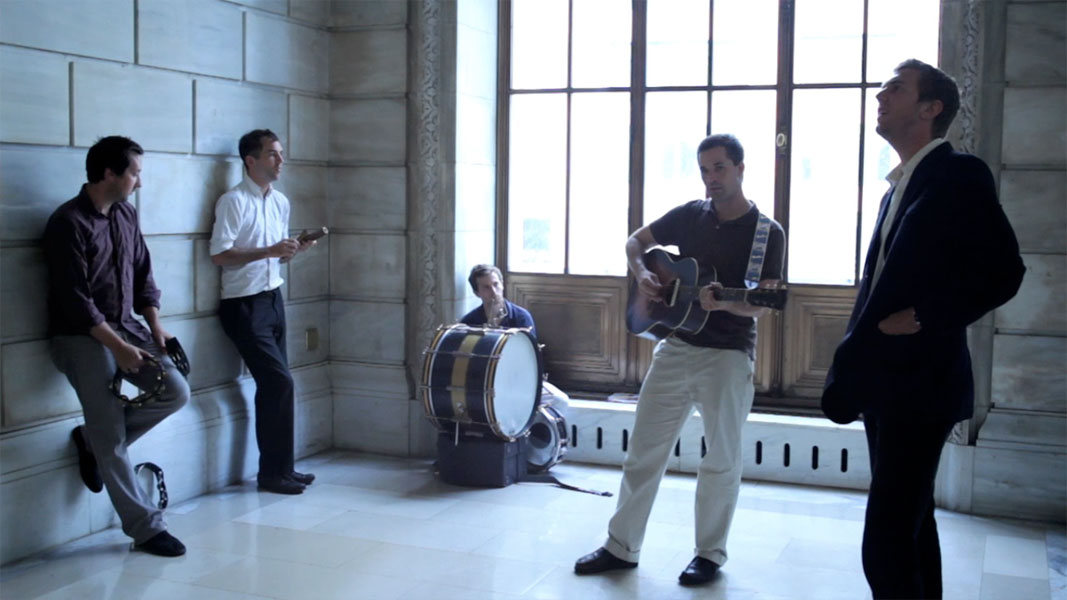
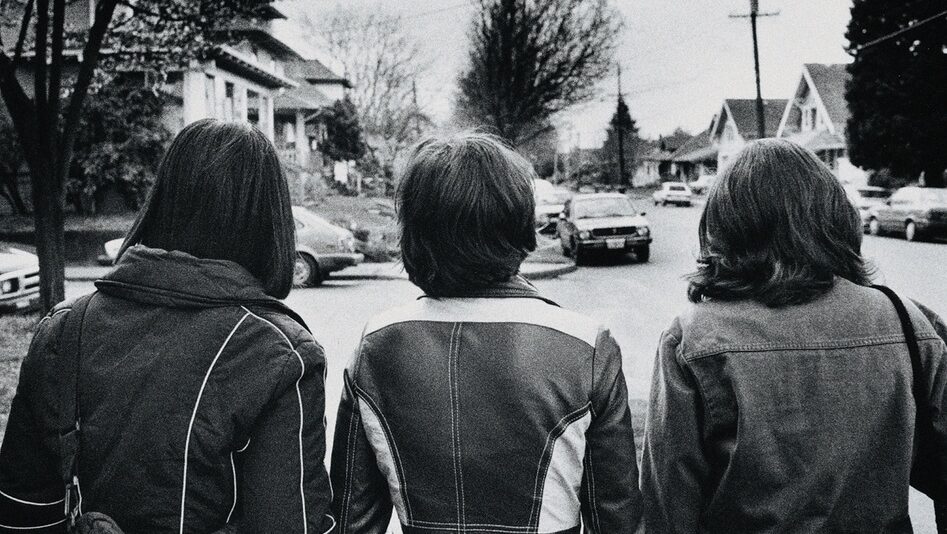
Great run down and appreciate that you recognised that there was a great band in existence before Pet Sounds. Personally, I’m less won over by Sunflower and Holland than many current fans are. They are strong albums and Carl and Dennis are great on them but they still feel a little… directionless. Summer Days and Today are things of beauty. Anyway, thanks for the interesting read and when’s the podcast out?
First podcast drops tomorrow! You can subscribe on YouTube (@strangecurrenciesmusic) to get a notification when it’s out. Thanks for reading!
Thanks for doing tha work. MLove your point that Beach Boys’ Honkin’ hHighway from Best to ( liver-)Worst is steeper than Any band ever. Which is in and of itself a trophy. I just wish Van Dyke Parks would get more involved. I love Orange Crate Art. And I put Song Cycle in Pet Sounds territory. And Jan and Dean deserve a lot more credit for what The Beach Boys are ( but not vice versa). As for a pure rock band, give me Jan and Dean( without Arnie-a great great d.j.) So I’m going to personally try to keep the Summer Alive.(but I’ll surf summer in Hell, over “Paradise.”)
Excellent overview. One thing: “My Diane” isn’t a DW song. Big Brother wrote it.
You’re right — written for Diane Rovell. Fixed it!
Well done. The issue with “Smile”!is that it is too damn good but you can’t explain it as people either get it or you don’t. The album Brian Wilson presents Smile is where a mortal looks over the edge and gives us something not possible through virtuosity alone.